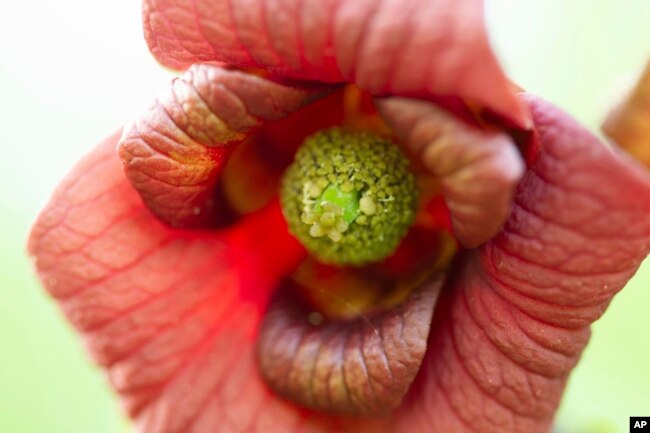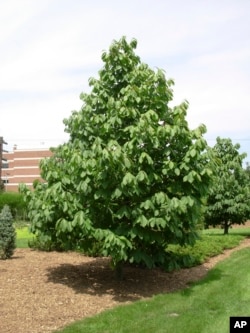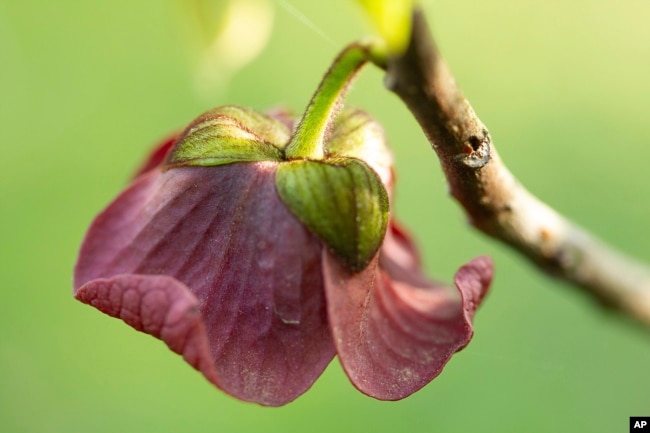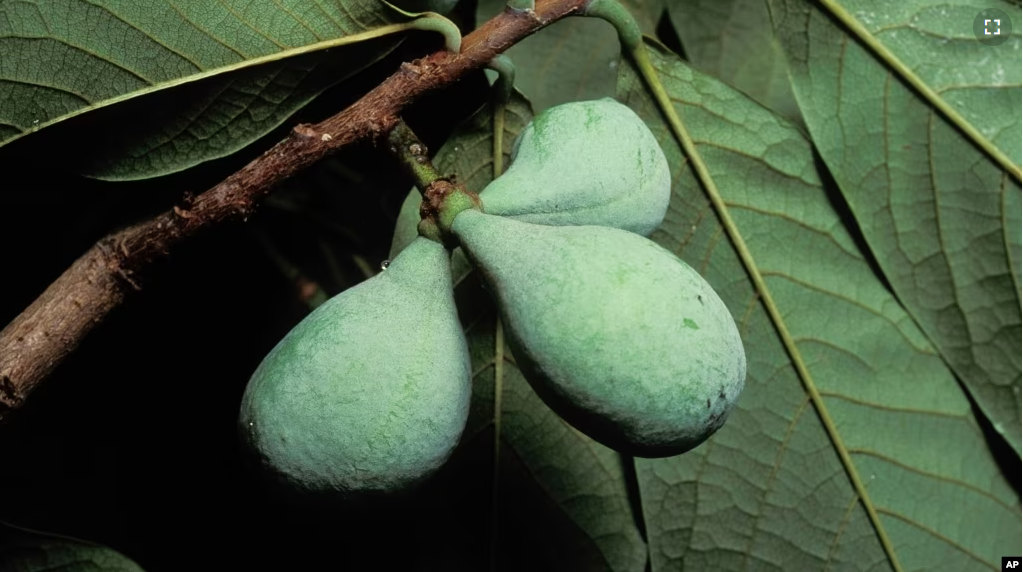It can be difficult to know which plants and trees will perform best and produce healthy fruits and vegetables where you live.
For Americans, one possible choice is the pawpaw, a tree that looks tropical but is native to much of North America.
Associated Press writer Jessica Damiano is an expert in plants and gardening. She writes, “Also known as Hoosier banana, poor man’s banana and false banana, the sadly underused (pawpaw) will transport you to the tropics.”
Pawpaw trees can be found growing wild from southern Ontario in Canada, to neighboring Michigan in the northern United States. The trees are also commonly found in western New York and in the southern states of Texas and Florida.

Pawpaws are known to grow well across large areas of the U.S. The small, triangular trees can reach heights up to nearly eight meters. They love humid weather and are highly resistant to freezing.
The branches are covered by maroon-colored blossoms in the spring. Then groups of heavy, eight-to-12-centimeter-long fruits that look like mangoes start to develop. In autumn, the trees’ yellow or gold leaves will brighten your property. And deer usually avoid the trees.
Damiano writes that pawpaw care is quite easy compared to many kinds of fruit trees. The trees should be placed in areas that receive full or partial sunlight. It is also good to provide some wind protection. And pawpaws should be planted in well-draining, slightly acidic soil with a pH level between 5.5 and 5.7. A pH level below seven is considered acidic.
Young trees should be watered often for a year or two until they are fully established. Gardeners can also add a 20-20-20 fertilizer mix once a month in April, May and June only. As far as other care, you should try to remove any growth that forms around the base of the tree. Pawpaws are not invasive but will expand outward if not controlled.

Damiano writes that in most cases, growers will need to start with grafted pawpaws, called cultivars, to ensure cross-pollination and fruit production. Look for grafted cultivars named Davis, Mary Foos Johnson, Overleese, Sweet Alice and Taylor. These pawpaws should produce fruit in a few years, as opposed to seed-grown trees, which can take six to 10 years.
If you can, avoid buying trees that have been grown in fields and then dug up to sell. This process risks damaging pawpaws’ long taproots. The taproot helps the tree effectively take up water.
Harvest the fruits in late summer when they are soft to the touch and easily come apart. To outsmart birds and other wildlife that may try to take perfectly ripe fruit, you can pick them a little sooner. But be aware that hard pawpaws picked too early will not fully ripen once picked.
Some people are sure that pawpaw fruit tastes like bananas while others say they taste more like papayas. Whatever the taste, this highly nutritious fruit is rich in vitamins, minerals and amino acids.
It can be eaten straight off the tree or cooked to make foods like puddings, smoothies, muffins, cakes and breads. When preparing those foods, however, the fruit’s thick skin and seeds should be thrown away because they can contain poisonous substances.

Some people in the U.S. might want to taste pawpaws before making the decision to grow them. But that could be difficult. This is because pawpaw fruits only stay fresh for a few days, making them difficult to transport. So, most markets do not carry them.
That means one of the only ways to experience pawpaws is to grow them yourself.
I’m Bryan Lynn.
Jessica Damiano of The Associated Press reported this story. Bryan Lynn adapted the report for VOA Learning English.
___________________________________________________________________
Words in This Story
tropical – adj. of, relating to or happening in the tropics
humid – adj. hot and slightly wet
blossom – n. a small flower, or the small flowers on a tree or plant
drain – v. when liquid flows out of something
fertilizer – n. a natural or chemical substance you put on land in order to make plants grow well
invasive – adj. moving into all areas of something and very difficult to stop
graft – v. to join a piece cut from one plant onto another plant
pollinate – v. to carry pollen from a male part of a flower to the female part of another flower of the same type
ripe – adj. completely developed and ready to be collected or eaten
